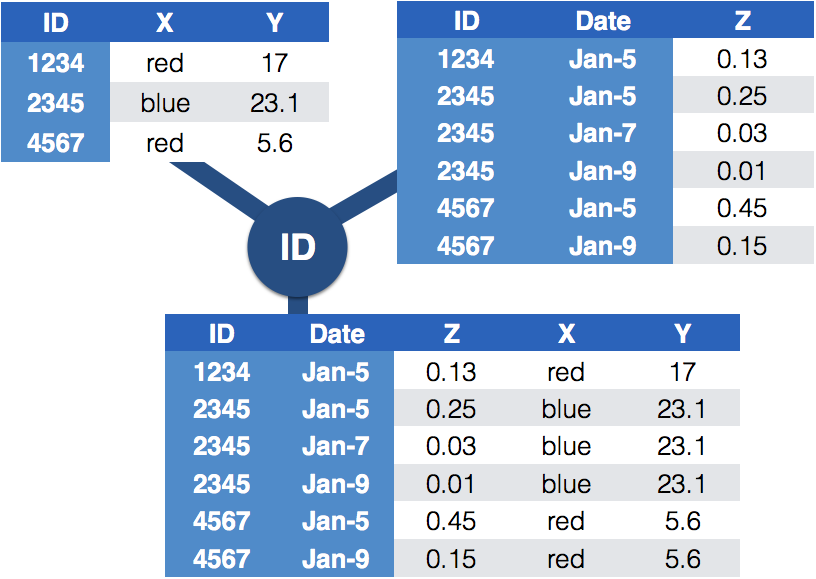Security footage shows that there were 2 witnesses. The first witness lives at the last house on "Northwestern Dr". The second witness, named Annabel, lives somewhere on "Franklin Ave".Join up, Detectives!
2025-04-08
Logistics
- Focus on homework 9: Murder in SQL City
Homework 9
- Solve a murder!
Connection of homework 9 to joins
Make sure to look at the relationship between the different data sets!
The first filter statement gives you enough information to start searching for witness statements.
- Eventually you will be in the situation that you need to look up information from a different table based on a key variable. Instead of using a filter with that information, merge the two tables to directly incorporate the information from the other table.
Joining with by=
How do we join person and interview?
Variable id in person is linking to person_id in interview
id name license_id address_number address_street_name
1 10000 Christoper Peteuil 993845 624 Bankhall Ave
2 10007 Kourtney Calderwood 861794 2791 Gustavus Blvd
3 10010 Muoi Cary 385336 741 Northwestern Dr
4 10016 Era Moselle 431897 1987 Wood Glade St
5 10025 Trena Hornby 550890 276 Daws Hill Way
6 10027 Antione Godbolt 439509 2431 Zelham Dr
ssn
1 747714076
2 477972044
3 828638512
4 614621061
5 223877684
6 491650087
transcript
1 <NA>
2 CHAPTER IV. The Rabbit Sends in a Little Bill\n
3 <NA>
4 \n
5 \n
6 nearer to watch them, and just as she came up to them she heard one of\nBackup for a moment
General idea of joining tables

Difference between the joins
Data sets are joined along values of variables.
In dplyr there are several join functions: left_join, inner_join, full_join, …
Differences between join functions only visible, if not all values in one set have values in the other
Example
id trt value
1 1 A 5
2 2 B 3
3 3 C 7
4 4 A 1
5 5 B 2
6 6 C 3Left join
all elements in the left data set are kept
non-matches are filled in by
NAright_joinworks symmetric
Inner join
- only matches from both data sets are kept
Full join
- all ids are kept, missings are filled in with
NA
Traps of joins
sometimes we unexpectedly cannot match values: missing values, different spelling, …
join can be along multiple variables, e.g.
by = c("ID", "Date")joining variable(s) can have different names, e.g.
by = c("State" = "Name")always make sure to check dimensions of data before and after a join
check on missing values; help with that:
anti_join
Anti join
- careful, not symmetric!